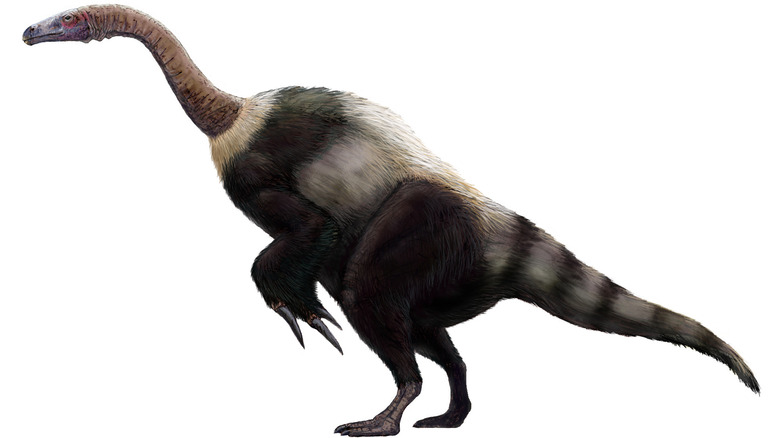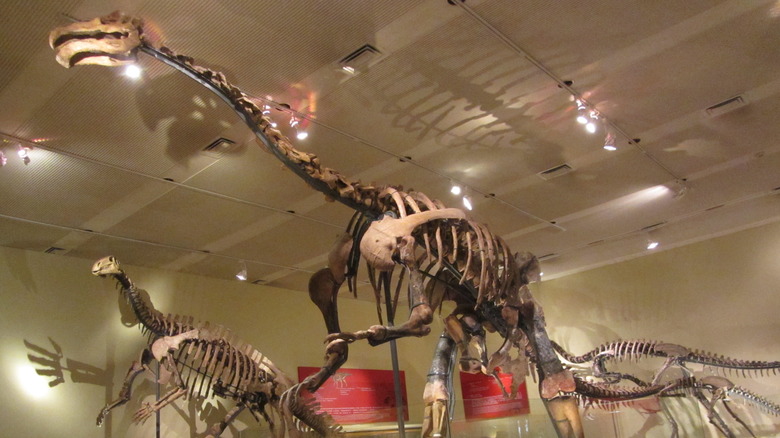What You Might Not Know About The Suzhousaurus Dinosaur
Suzhousaurus dinosaurs, more formally known as Suzhousaurus megatherioides, were discovered in 2007 in the Lower Cretaceous Xinminpu Group of Gansu Province, China. Per National Geographic, the Suzhousaurus is a Therizinosauroidea, a particularly enigmatic type of dinosaur about which little was known at all until the 1970s. In fact, earliest discoveries of therizinosaur remains, which included enormous, curving claws, led scientists to believe that they belonged to some sort of giant turtle. They were eventually determined to be theropod dinosaurs, which had hollow bones and three-toed limbs.
The University of California, Berkeley's Museum of Paleontology calls therizinosaurs "freaky" and "frustratingly enigmatic," noting that there are no well-preserved complete Therizinosauroidea skeletons available, which makes determining their relationships and fully understanding their anatomy extra challenging. However, features in their forearms, skulls, and pelvises suggest that they were close relatives of birds. Furthermore, they are set apart from other dinosaurs by their gigantic front claws, which can be up to three feet long. One might think that dinosaurs would use such mighty claws for hunting prey, but unlike other theropods, their jaws and teeth suggest they were herbivores. According to Prehistoric Wildlife, some scientists have speculated that the Suzhousaurus is from the same genus as another dinosaur, the Nanshiungosaurus, but as overlapping fossil material isn't available, it's not known for certain at this time. Suzhousaurus fossils include back, hip, and tail vertebrae, the left half of a pelvis, and two femurs.
The large vegetarian dinosaur with the giant claws
As reported by Live Science, the Suzhousaurus existed during the early Cretaceous Period, or 115 million years ago. Before its discovery, other large therizinosaurs were known only from around 90 million to 66 million years ago, or near the end of the Age of Dinosaurs. Suzhousaurus were large compared to other theropods, measuring around 7 yards in length. Fossils of a likely close relative, the Nothronychus, have only been found in Utah and New Mexico, suggesting that dinosaurs used to cross a former land bridge between North America and Asia. Per paleontologist Matt Lamanna of the Carnegie Museum of Natural History: "The most primitive known therizinosaur comes from Utah, so the group may have originated in North America, but they apparently evolved larger body size relatively quickly once they got to Asia."
What was the purpose of the Suzhousaurus' large claws if they weren't used for hunting prey? According to National Geographic, one theory suggested they used them like modern day anteaters use their claws and tore into termite mounds to find food, but as the dinosaurs are quite large, they'd have to eat a staggering number of termites to satisfy their hunger. Another suggestion was that they were used as defense against other dinosaurs, which makes sense, but scientists agree that the most likely explanation is that they used the claws to pull down tree branches and tall plants to eat. This method of eating has also been attributed to giant ground sloths and in fact, the name Suzhousaurus megatherioides means "giant sloth-like reptile from Suzhou," per Live Science.

